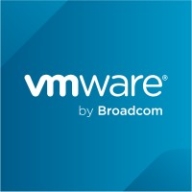

CloudBolt and VMware Tanzu Platform are competing solutions in the enterprise cloud management space. VMware Tanzu Platform seems to have the upper hand with its feature richness, making the investment worthwhile for organizations focused on advanced capabilities.
Features: CloudBolt delivers flexibility and centralized control with its multi-cloud management capabilities. It offers flexibility through customizable extensions, allowing the integration of scripts and webhooks for enhanced network storage management and application deployment. VMware Tanzu Platform provides robust application modernization tools, supporting containerization and the orchestration of Kubernetes. Its sophisticated infrastructure automation and integration with products like vSphere streamline development processes and application management.
Room for Improvement: CloudBolt could improve its feature set by deepening integration with large ecosystems and enhancing its scalability for complex deployments. Improved analytics tools and reporting dashboards would also add value to its offering. VMware Tanzu Platform might benefit from simplifying its deployment process, reducing the initial learning curve for new users. Enhancing user experience with more intuitive interfaces and streamlining resource requirements could make it more accessible to smaller teams. Expanding its support for more diverse cloud environments would also enhance its competitive edge.
Ease of Deployment and Customer Service: CloudBolt is praised for a seamless deployment process that facilitates quick setup, accompanied by strong customer support that assists enterprises through potential hurdles. VMware Tanzu Platform, while offering extensive feature sets, presents a more complex deployment process, requiring more initial resources. However, it balances this with comprehensive documentation and robust support systems to assist users throughout the deployment and operational stages.
Pricing and ROI: CloudBolt generally offers competitive pricing and demonstrates a quicker return on investment for businesses seeking to optimize their cloud strategy with minimal upfront costs. Despite having a higher initial setup cost, VMware Tanzu Platform offers significant ROI through its advanced capabilities that cater to organizations pursuing comprehensive cloud-native transformations.
| Product | Market Share (%) |
|---|---|
| CloudBolt | 2.5% |
| VMware Tanzu Platform | 1.1% |
| Other | 96.4% |


| Company Size | Count |
|---|---|
| Small Business | 3 |
| Midsize Enterprise | 1 |
| Large Enterprise | 6 |
| Company Size | Count |
|---|---|
| Small Business | 10 |
| Midsize Enterprise | 3 |
| Large Enterprise | 10 |
CloudBolt supports a variety of cloud technologies, from on-premises virtualization and private cloud to a wide range public and hybrid cloud configurations.
No need to rip-and-replace. CloudBolt provides easy import, syncing, and management of legacy deployments even as it helps you build out new cloud environments.
CloudBolt lets administrators create and maintain configuration standards while developing a reusable library of service and application templates.
VMware Tanzu Platform is designed for cloud-native development and management of Kubernetes, CI/CD processes, microservices, and containerized workloads. It supports deployments both on cloud and on-premises, providing centralized management via Mission Control.
VMware Tanzu Platform offers seamless integration with vSphere, ESX, and vSAN, supporting centralized cluster management and lifecycle management. The platform provides a GUI for monitoring CI/CD pipelines and network policies, enhancing multi-tenancy and Day 2 operations. Users can easily manage Kubernetes clusters, monitor applications, and integrate with tools such as GitHub, GitLab, Cloud Foundry, and Azure. It ensures compliance and security for service providers, financial institutions, and businesses.
What are the key features of VMware Tanzu Platform?
What benefits and ROI should users look for in VMware Tanzu Platform reviews?
Industries such as financial institutions, service providers, and businesses requiring rigorous compliance and security deploy VMware Tanzu Platform. These entities benefit from centralized management, streamlined DevOps processes, and integrated tools, enhancing their capabilities in cloud-native developments and containerized workloads.
We monitor all Cloud Management reviews to prevent fraudulent reviews and keep review quality high. We do not post reviews by company employees or direct competitors. We validate each review for authenticity via cross-reference with LinkedIn, and personal follow-up with the reviewer when necessary.